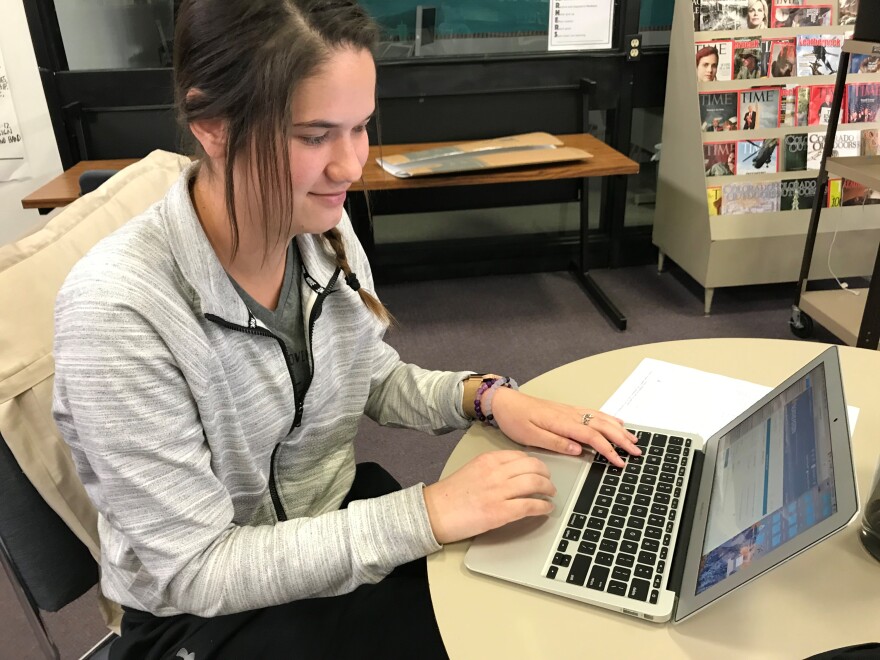Colorado students improved in reading, writing and arithmetic, but overall, the majority are not meeting academic expectations.
The Department of Education released state, district and school-level results for about 550,00 third through 11th-graders. In April, students took one or more of the Colorado Measures of Academic Success (CMAS) assessment tests in English, math, social studies or science. Ninth and 10th-grade students took the PSAT while 11th-graders were administered the SAT.
This was the fifth year of the Colorado Measures of Academic Success assessment.
Third through eighth-grade students took the English language arts and math tests. For ELA, the percentage of students meeting or exceeding expectations, the top two of five levels, improved from last year for every grade except seventh. But overall, all grades have seen improvement since the test was first administered in 2015.
"Our teachers are becoming more familiar with the standards and what the expectations are for students at each grade level," said Floyd Cobb, executive director of teaching and learning. "I would say above that there has been a tremendous focus here in the state of Colorado as it relates to early literacy."
But despite the increases, more than half of test takers in each grade did not fall into these top two categories. The highest percentage of students who met or exceeded expectations were fifth-graders at 48.4%.
In the math assessment results, third-graders showed almost a 2 percentage point improvement over 2018 students in the two highest levels. Meanwhile, sixth-grade proficiency has continued to decline annually, falling from 31.7% in 2015 to 29.5% in 2019.
Fifth, eighth and 11th-grade students took the science assessments. The two younger grades improved slightly over last year's scores with 35.9% of fifth-graders and 31.5% of eighth-graders meeting or exceeding expectations. Only about 21% of 11-graders fell into these two categories. But, according to the department's press release, a low participation rate of 61% makes these results difficult to interpret.
The number of social studies assessment results that met or exceeded expectations also improved from 2018. But only 24% of fourth-graders and 17.9% of seventh-graders scored in these two top levels.
Achievement gaps in academic performance still persist between races and ethnicities, genders, economically disadvantaged students and students designated for special education services.
For example, the percentage of white fifth-graders who met or exceeded expectations on the ELA test was 60.1% compared to 31.5% of Hispanic and 31.6% of black students.
"I think from a departmental point of view the gaps definitely are of concern," said Joyce Zurkowski, chief assessment officer. "Our focus needs to be on all of our students regardless of background, regardless of achievement and our goal is to help all of those students move forward."
SAT participation is at an all-time high with 57,973 11th-grade students taking the college entrance exam. This is the largest number since the state began sponsoring a school day administration of the test in 2001. The mean composite score of 1,001, which combines evidence-based reading and writing and math results, is slightly lower than 2018's 1,014 result. But Colorado teens continue to outperform their national cohort.
While a record number of 11th-graders took the SAT, only 61% of them participated in the CMAS science test. This is a 2-percentage-point drop from 2018 and the lowest rate among the grades and tests.
Assessment participation in other grades has improved. Grades three through five all had rates over 95% while middle school saw relatively no change from 2018. But all grades have increased participation since 2015.
Most high school students took the PSAT with ninth-graders leading the way with a 93.4% participation rate followed by 92.3% of 10th-graders.
"This assessment really is an end of the year assessment providing summative information. Keep in mind that schools and districts have their own assessments that they utilize throughout the year to really inform instruction, in terms of the target of the instruction and how they approach those activities," Zurkowski said. "They're kind of getting that information for tomorrow in terms of what it is that they need to be doing.
The Department of Education also released academic growth summary data from English language arts and math assessments, which shows student progress from year-to-year.
State assessments are aligned to the Colorado Academic Standards and remain the only common academic measure for students.





